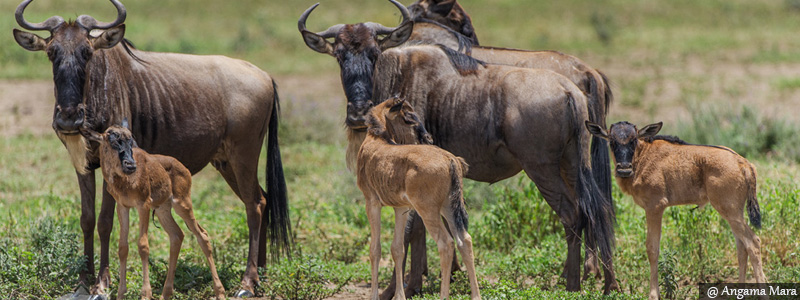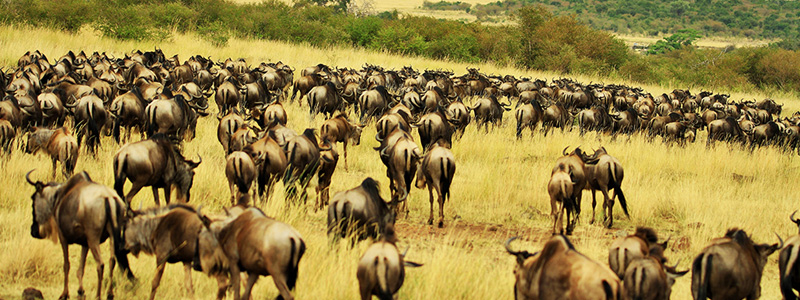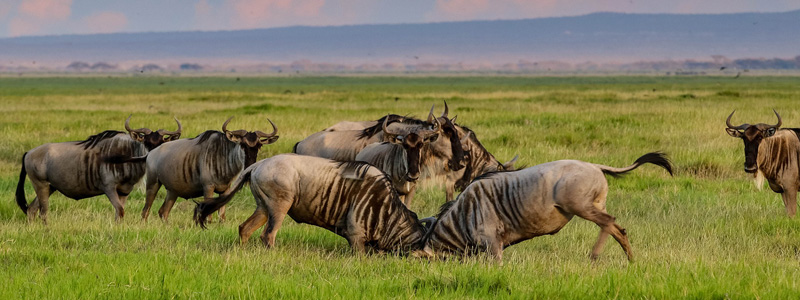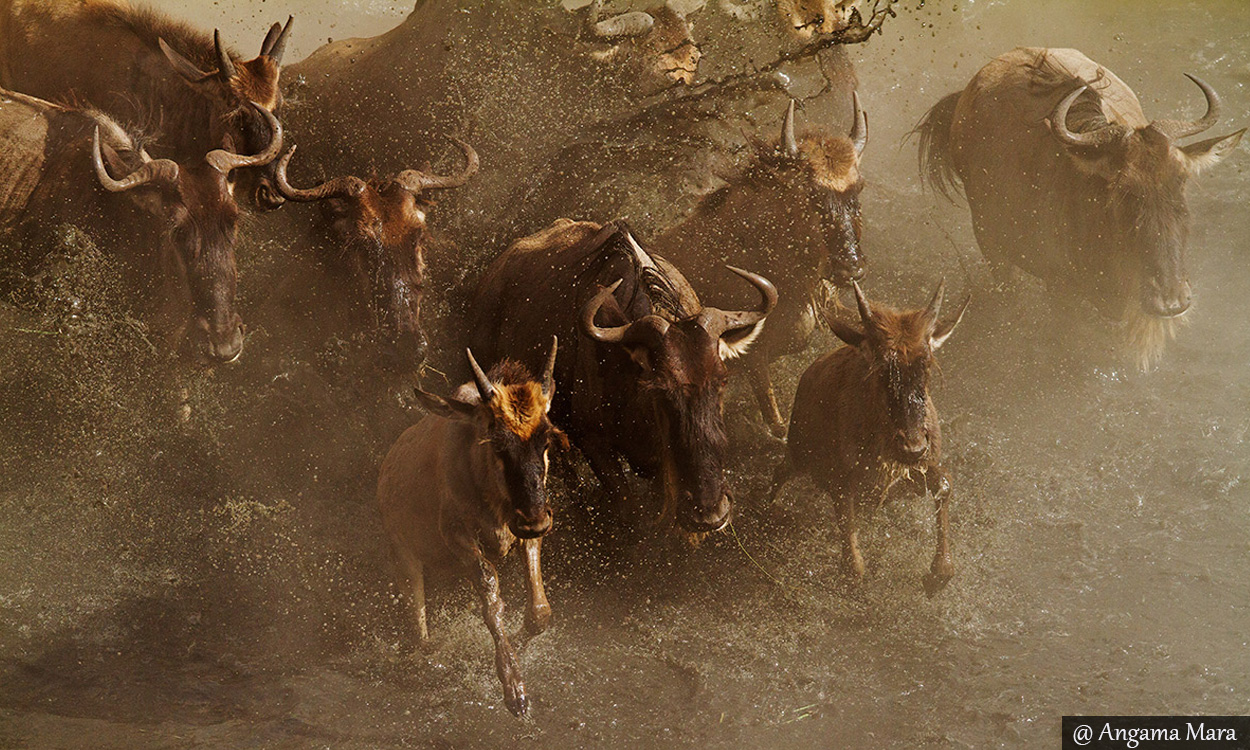Guide to the Wildebeest Migration Spectacle
The Wildebeest Migration, one of the most spectacular wildlife events, is a marvel to watch. Nearly 2 million wildebeests, zebras and other animals like Thompson's gazelle, eland and hartebeest cross into Kenya's Maasai Mara from Tanzania's Serengeti National Park. They make the perilous trek with only two things in mind: food and water.
Note: The Kenyan journey starts at the end of June and goes on until the end of October.
It is estimated about 250,000 wildebeest and 30,000 zebra perish in this tough trek, mainly younger ones.
Traditional Migration Pattern Timeline
January - March: Calving Season
The calving season is characterized by plenty of rain in the Serengeti. The wildebeest pick this time of year to foal as the conditions are perfect with lots of lush grass and water. Approximately 8,000 young wildebeest are born every single day during the peak of the season. The foals will have a month or two to gather their strength before beginning the long migration to the Masai Mara. Traveling to the Serengeti during calving season promises an exciting adventure full of wonder and action.

April - June: Pre-crossing
This period sees the herds start their northward march and many may have already left and can be found in Serengeti's central and western corridor. End of May/early - June sees a large part of the herd still in the Serengeti by the Grumeti River. Some herd continue with their march towards Mara and can be seen crossing the Mara River towards the end of June & early July.

July - September/October: The Crossing
Coming from the Serengeti to Masai Mara, the Mara River provides the migration with its most serious obstacle. Watching the frantic herds of the wildebeest migration crossing the Mara River can be very spectacular; there are often scenes of great panic and confusion. Why? Five-metre-long crocodiles, that is why. Book early - as this is the Big Event.

October - December: The Return
In October, your best bet of seeing the Migration will be in the Mara conservancies, where it is much less crowded. November is the onset of short rains, which prompts the wildebeest to leave the bare Masai Mara grassland into the replenished Serengeti. With fresh grass back in the Serengeti, the wildebeest are clustered in the southern and north-east part of the park.
Calving season is about to start which produces another 500,000 new calves to continue Kenya's great "Seventh Wonder of the World". About 250,000 wildebeest die during this 1,800 mile journey due to predator attacks, exhaustion and sickness.

Incredible Facts about the Migration
a. Wildebeests (Gnu) are Antelopes
The gnu (pronounced "g-new" or simply "new") is a member of the antelope family. Its forequarters could have originated from the ox, the hindquarters from an antelope and the tail and mane from a horse. They can reach 2.4 meters in length, 1.4 meters in height and weight up to 272 kilograms.
b. Wildebeests are Grazers
Wildebeests are mostly located in the plains of Kenya & Tanzania, i.e. the Serengeti & Mara. They are grazers and due to harsh climate, lack of water & grass they are well known for their seasonal migration. They travel in large herds and are active day and night, grazing constantly.
c. Calves walk within minutes of birth
The animals take a migratory cycle each year of 500 to 1000 miles beginning in January/February with the calving season. This is the start of the rainy season. During this time some 300,000 to 500,000 calves are born.
Interestingly, calves learn to walk within minutes of birth and in a few days can even outrun a lioness. Gnus can live up to 20 years.

